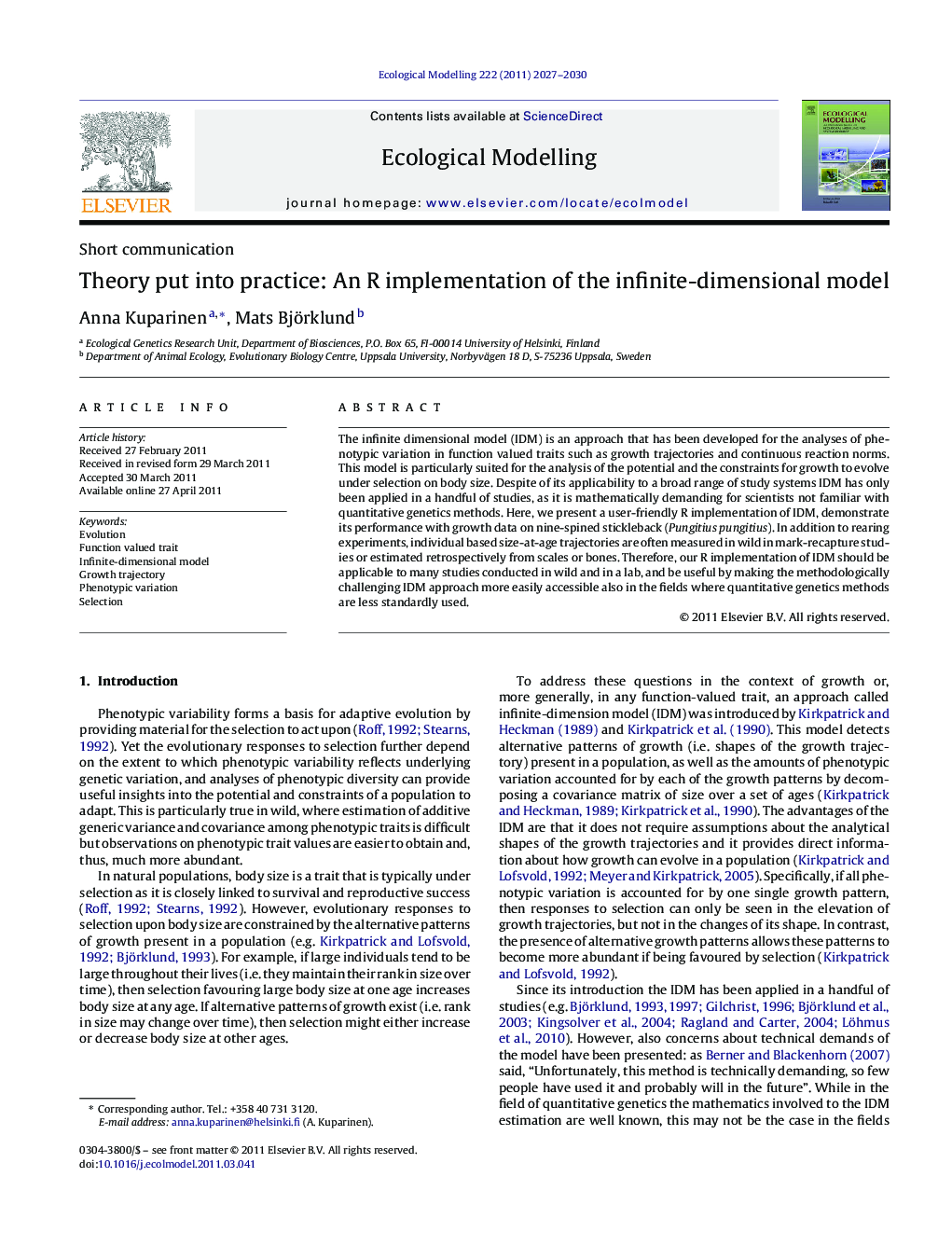| Article ID | Journal | Published Year | Pages | File Type |
|---|---|---|---|---|
| 4376854 | Ecological Modelling | 2011 | 4 Pages |
The infinite dimensional model (IDM) is an approach that has been developed for the analyses of phenotypic variation in function valued traits such as growth trajectories and continuous reaction norms. This model is particularly suited for the analysis of the potential and the constraints for growth to evolve under selection on body size. Despite of its applicability to a broad range of study systems IDM has only been applied in a handful of studies, as it is mathematically demanding for scientists not familiar with quantitative genetics methods. Here, we present a user-friendly R implementation of IDM, demonstrate its performance with growth data on nine-spined stickleback (Pungitius pungitius). In addition to rearing experiments, individual based size-at-age trajectories are often measured in wild in mark-recapture studies or estimated retrospectively from scales or bones. Therefore, our R implementation of IDM should be applicable to many studies conducted in wild and in a lab, and be useful by making the methodologically challenging IDM approach more easily accessible also in the fields where quantitative genetics methods are less standardly used.
► Phenotypic variability forms a basis for adaptive evolution. ► Infinite dimensional model (IDM) is suited for analysing phenotypic variation in function valued traits. ► We build IDM to an R library and demonstrate its use with a fish growth data. ► The R implementation provides an easy way to use the sophisticated IDM model.
